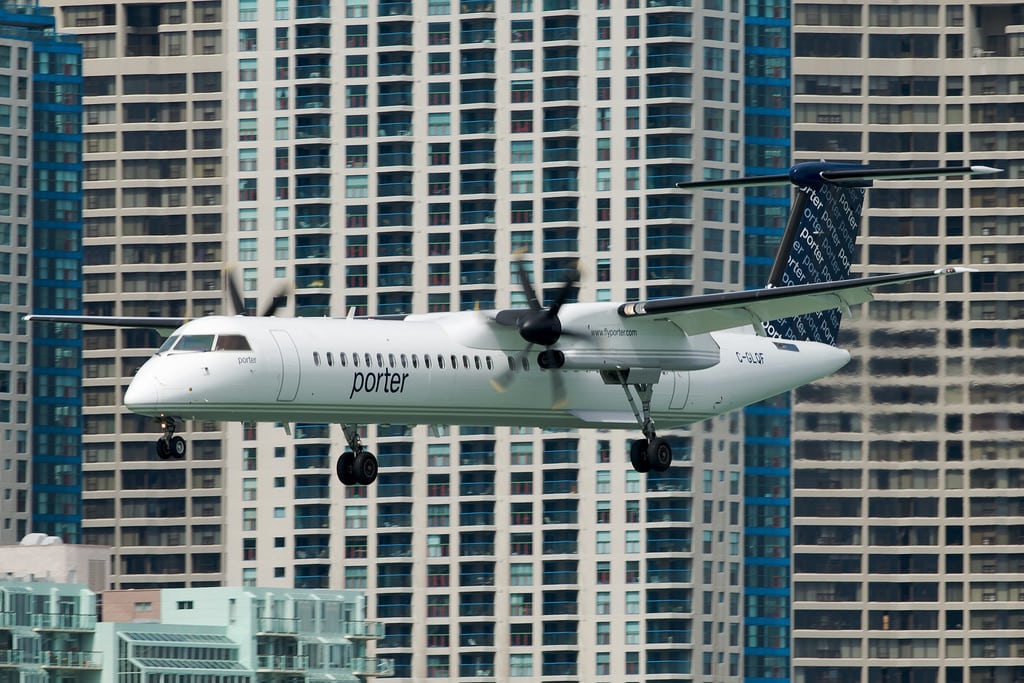The Rise and Fall of Porter Airlines — Digital Marketing News This Week

Skift Take
This week we're talking about the business challenges faced by Porter Airlines.
The Canadian regional airline has won consistent praise from travelers for its free booze, convenient airport close to downtown Toronto and sleek design aesthetic. What's not to love then? The answer, it seems is Canada's new Liberal Party government (with alleged support from Porter competitor Air Canada), which has denied plans for the airline's expansion in Toronto, stunting its future growth.
Porter's current challenges, along with the impending merger of much-loved Virgin America with Alaska Airlines, are good reminders of just how difficult it can be to shake up the airline industry. A premium product loved by its passengers alone doesn't cut it when wild cards like government red tape and backdoor industry lobbyists come into play. Here's hoping these factors don't stop more innovators from trying in the years to come - they're still sorely needed.
Tracking the Rise, and Fall, of Porter, Canada's Upstart Airline
Not too many fliers outside Canada are familiar with Porter Airlines. The Toronto-based regional airline has won consistent raves from travelers for its convenient downtown airport, plush lounges, slick design sensibility and complimentary on-board beer and wine. But opposition to its terminal expansion plans in Toronto from rival Air Canada and Canada's Liberal Party may ground the high-flying airline before it can fight back. Was this a marketing misstep? Or was something bigger at play? Read more
Carlson Wagonlit Announces New CEO Amidst Corporate Travel Shift
All is not well in the world of corporate travel. While the sector continues to make up a huge portion of overall travel spending, drastic changes in how consumers find and book travel, plus new competitors like Expedia and Booking.com are eating into the fat profit margins these firms once enjoyed. Carlson Wagonlit's announcement of its new CEO last week is just one sign of the firm's attempts to transform itself in the face of these rising digital challenges. Read more
London Buses Use Beacons to Deliver Travel Updates, Location-Based Ads
Beacons are seeing growing embrace by convention centers, hotels and airports as a convenient way to provide navigation and deliver contextually relevant marketing to guests. Now London's iconic bus system is tapping into beacon technology as well, with the public transit provider using its branded app and beacon technology to deliver travel updates and local advertising to riders. Read more
Iceland's Wow Air Turns to Snapchat Stories for Marketing Push
Millennial travelers can't seem to get enough of photo messaging app Snapchat, and more travel brands like Hilton seem to be taking notice. The newest travel brand to join the Snapchat marketing mix is Iceland's low-cost Wow Air, which recently launched a contest to find travel-savvy "marketing ambassadors" to man the company's Snapchat account for an upcoming campaign. Read more
Booking.com Turns to Messaging Tech for Customer Service Push
Online travel platform Booking.com has grown into a travel industry behemoth thanks to a mix of continuous digital innovation, savvy online marketing and an extensive network of hotel properties. Following the lead of other travel players, the company's latest innovation is a new chat feature within its mobile application. The company hopes the messaging service can replace lengthy and unwieldy customer service issues currently handled via email. Read more
Do Hotels Still Need a Front Desk?
Automation and mobile technology have come a long way at hotels. It's come so far, in fact, that some are questioning if hotels still need a front desk to service guests at all. While the idea is a good one in theory, and guest-facing technology certainly makes it possible, hotel marketers need to decide if doing away with face-to-face interaction with guests is a ultimately a good idea for their brand. Read more




